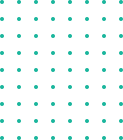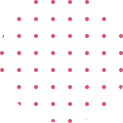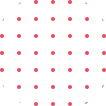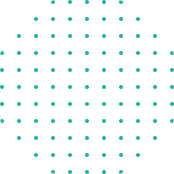IEEE Final Year Projects for ECE
Overview Of IEEE
Through highly cited publications, conferences, technology standards, and professional and educational activities, IEEE and its members encourage people all over the world to think of new ways to make the world a better place. IEEE is the "voice" for information about engineering, computing, and technology around the world.
IEEE is the world's largest group of technical professionals who work to improve technology for the good of all people. Through its highly cited publications, conferences, technology standards, and professional and educational activities, IEEE and its members inspire individuals all over the world.
The IEEE has:
- There are more than 409,000 members in more than 160 countries, and more than 60% of them are not from the U.S.
- More than 125,000 students are members.
- Has 39 technical Societies and 7 Technical Councils that represent the wide range of technical interests of IEEE.
The IEEE Xplore® digital library has more than 5 million documents, and more than 15 million people download them each month.
How Does the IEEE Final Year Project in ECE Impact Your Career?
Students will have the opportunity to select projects from the IEEE portal, and they will gain many ideas for their final year projects. IEEE, as a world standard organization, nurtures, develops, and advances the development of global technologies. IEEE SA, as a leading developer of industry standards in a wide range of technologies, drives product functionality, capabilities, safety, and interoperability, transforming how people live, work, and communicate. IEEE standards lay the groundwork for a globally level playing field for innovation, while also protecting public safety, health, and well-being and contributing to a more sustainable future.
Final-year ECE students who completed projects in accordance with IEEE standards will be recognized in the ECE industry.
Top 10 IEEE Projects for ECE Final Year
1. IEEE-AI project – Cloud-Based Water Quality Monitoring Platform
The importance of assessing the water quality in various ecosystems is growing as a result of the expansion of human activities, particularly water pollution. The purpose of this AI project is to monitor water quality in ecosystems that are extremely sensitive and fragile. When discussing water quality management and modelling,
The concept also presents the state of the art in terms of how to model data. In addition, we present the required platform functionality that must be developed in the AI project, as well as the data validation and pre-processing methodologies that we propose for the project and the use cases that we consider for the project.
2. IEEE-Automatic Face Recognition and Virtual Assistant through IoT and AI
 The purpose of this elegant reflector is to make a person's life more comfortable, secure, refined, etc. A projected Elegant reflector identifies individuals based on voice command and identity verification. Individuals can retrieve real-time data by using voice command inputs and identity verification, and the elegant reflector can display real-time information such as period, day, weather forecasts, and news broadcasts whenever they require it.
The purpose of this elegant reflector is to make a person's life more comfortable, secure, refined, etc. A projected Elegant reflector identifies individuals based on voice command and identity verification. Individuals can retrieve real-time data by using voice command inputs and identity verification, and the elegant reflector can display real-time information such as period, day, weather forecasts, and news broadcasts whenever they require it.
In this project, we utilize intelligent mirrors, face recognition, and speech recognition. Face recognition algorithm that is eigenface-based. In this project, voice-activated software bots are being used to implement home technology. We can ask any question and receive an answer from Google Assistant. It is dense and thrifty.
3. R-PI-enabled AI-enabled Smart City IoT System utilising Edge Computing
Using Edge Computing, this research has created an artificial intelligence (AI)-enabled smart city IoT system. For the purpose of intelligent decision making and data processing, AI algorithms have been implemented in this research. The novelty of this work is the incorporation of Edge computing into IoT systems, which improves IoT system performance by reducing cloud load.
Wi-Fi protocol is used for data transmission at the network level. Raspberry–pi is utilised for edge server design. This project's primary objective is to prevent unanticipated pollution levels in air, water, etc., which are detrimental to human health and the environment.
Also included in this smart city application are City air management, traffic and transportation management, effective power utilization, and water pollution monitoring. And this monitoring is performed by a variety of sensors, including cameras, gas sensors, water quality sensors, and other sensors. We collect physiological data from the sensors' environment, store it in a database, and analyze it in order to make intelligent decisions. This information is then displayed on the website and communicated via SMTP.
4. Medical Waste IoT Monitoring System Based on Artificial Intelligence

In order to achieve "closed-loop management, fixed-point orientation, and whole-process traceability" of medical waste, the IOT monitoring system for medical waste is divided into three levels based on face recognition technology and the system engineering principle.
Hospital information monitoring center, professional transportation company information monitoring and medical waste treatment company for the first level monitoring information monitoring center, the municipal medical waste management information monitoring center for secondary monitor, provincial medical waste management information monitoring center for three-level monitoring, special is responsible for, layers of management, the framework is clear, and the problem has been resolved.
5. A Voice-Activated Internet of Things Home Automation System with Smoke and Fire Detection and Mitigation
Projects in the field of Internet of Things, which is coupled with Artificial Intelligence, are centered on the use of technologies to connect the world. This system was primarily controlled by the ESP32 IoT development board. The researchers designed this project to provide home automation in the form of smart lighting and switching, smoke and fire detection and mitigation systems, which will contribute to the reduction and management of disaster risk.
When smoke/gas was detected, The voice-activated home automation activated the exhaust fans, and when a fire was detected, it activated the water pumps. As long as the internet connection is stable, it was observed that home automation will function properly. On the other hand, smoke/gas and fire detection and mitigation can continue to be carried out without an internet connection. SMS notifications were responsive in addition to the web server's real-time responsiveness.
6. A Deep Learning and IoT-based Visually Impaired Assistant

India is home to approximately 40 million visually impaired people, which accounts for 20 percent of the world's blind population. In addition, over 90% of these individuals have limited or no access to the necessary assistive technologies. The paper proposes 'Smart Cap,' a vision-based first-person assistant designed to provide visually impaired Indians with a narrative of the world. The Smart Cap is a conversational agent that combines Internet of Things and Deep Learning and offers features such as face recognition, image captioning, text detection and recognition, and newspaper reading online.
7. Low-Cost SCADA System Based on ESP32, Raspberry Pi, Node-Red, and MQTT Protocols
Increasing energy costs and demand have prompted a number of organisations to seek intelligent methods of monitoring, controlling, and conserving energy. Intelligent automation can reduce costs while meeting energy demand. The residential, commercial, and industrial sectors can utilise Internet of Things (IoT) technologies to better manage energy consumption. This paper describes a cost-effective, open-source, and dependable Supervisory Control and Data Acquisition (SCADA) system for home monitoring and control systems.
The presented SCADA system utilizes analogue sensors, ESP32, Node-RED, and Message Queuing Telemetry Transport (MQTT) over local Wi-Fi to remotely control and access appliances. This system allows users to monitor conditions such as temperature, humidity, pressure, and light intensity in their homes. Consequently, users can remotely monitor devices such as lights, fans, and heating/cooling systems and make decisions based on sensor feedback.
8. RO's Waste Water Reuse and Water Management in Society Using IOT Automation
Increasing numbers of water purifier users face the issue that the Reverse Osmosis (RO) rate consumes a great deal of water to produce less drinkable water. 75% of water is eliminated by 25% water. Additionally, 75% will be utilized for other purposes as opposed to being wasted. Every day, approximately 2.430 billion liters of water are wasted in India. Reverse osmosis is the process of making that water drinkable, and the Internet of Things will change everything.
Here, IoT and sensors are used to design a system that will collect residential RO wastewater in a single tank and reuse it for watering grass in public infrastructure and car washing. ESP32 is a fundamental component of every design. ESP32 is clever. This design will include sensors such as a soil moisture sensor, water level indicator, and Digital Temperature and Humidity sensor (DTH11).
9. Cloud-based Mobile Application Development Using the ESP32- IoT Development Board
This project describes the development and deployment of an application utilizing a development board equipped with an ESP32 chip and its integrated sensors. The board is optimized for the deployment of applications on the Microsoft Azure cloud platform. The paper describes an application that collects data from a gyroscope and an accelerometer, which are then transmitted to a cloud service via an IoT hub. The developed mobile application displays the measured data, which may be viewed on a smartphone or tablet.
10. Soldier Healthcare Monitoring and Tracking System Based on ESP-32 IoT
![]()
Smart sensors, including a heart rate sensor, a temperature sensor, a bomb detector, and a panic button, are attached to the proposed system, which will implement complete mobility via a personal server. The parameters gathered by the attached real-time sensors are sent to the processor for processing. In this application, the noise-free signal is an important metric.
This would be performed by edge computing solutions on a nearby personal server. The data will be transmitted wirelessly to the base station, which will be located far from the sensing location. Additionally, each soldier is equipped with an ESP32 module that enables them to communicate with the base station in the event of an injury.
Frequently Asked Questions On IEEE Projects ECE
1) What are the best projects for resume?
For students who want to build careers in the core electronics domain, it is important to work on live industry-related projects. Developing real-world projects is the best way to hone your skills and materialize your theoretical knowledge into practical experience. IEEE- based projects will give you lot of such ideas and this will helps to build you profile for resume.
2) What is IEEE?
IEEE is the world's largest group of technical professionals who work to improve technology for the good of all people.
3) How to choose a final-year IEEE project for ECE?
- Tips for selecting your final year IEEE project.
- Do some research in IEEE website for some project topics
- Consult your project mentor in the college
- Approach some industry experts for guidance.
- Read the Existing Research Papers.
4) What type of standard making body is IEEE?
IEEE is a leading developer of international standards that support many of today's latest telecommunications, information technology, and power-generation products and services. And it is a source for setting the standards for emerging technologies.
5) Why do we use IEEE?
IEEE-Has an active portfolio of 1,076 standards and more than 900 projects under development
6) What is Electronics & Communication Engineering?
Electronics & Communication engineering students deals with the electronic devices, circuits, communication equipment’s like transmitter, receiver, integrated circuits (IC).
7) What does an Electronics & Communication Engineer do?
All of the applications which make our life easier and enjoyable such as Television, Radio, Computers, and Mobile are designed and developed projects by Electronics and Communication Engineers (ECE). These are considered to be mini projects of ECE students and major projects of ECE students are Design and maintain satellites, which bring TV, telephone and Internet service into remote and rural regions. Projects by ECE Engineers also created advanced communication facilities like video conferencing and develops programs for various control and communication systems.
Major IEEE projects on ECE aims to deepen the knowledge and skills of the students on the basic concepts and theories that will equip them in their professional work involving analysis, systems implementation, operation, production, and maintenance of the various applications in the field of Electronics and Communications Engineering. ECE Students deals with basic electronics, analog and digital transmission & reception of data, voice and video (Example AM, FM, DTH), microprocessors, satellite communication, microwave engineering, antenna and wave progression.
8) What is the Future of ECE Student?
Projects for ECE students will make them shine in these departments; they are Service Engineer, Software Analyst, Technical Director, Field Test Engineer, Senior Sales Manager, Network Planning Engineer, Customer Support Engineer, Electronics and Communications Consultant and Research & Development Software Engineer.












